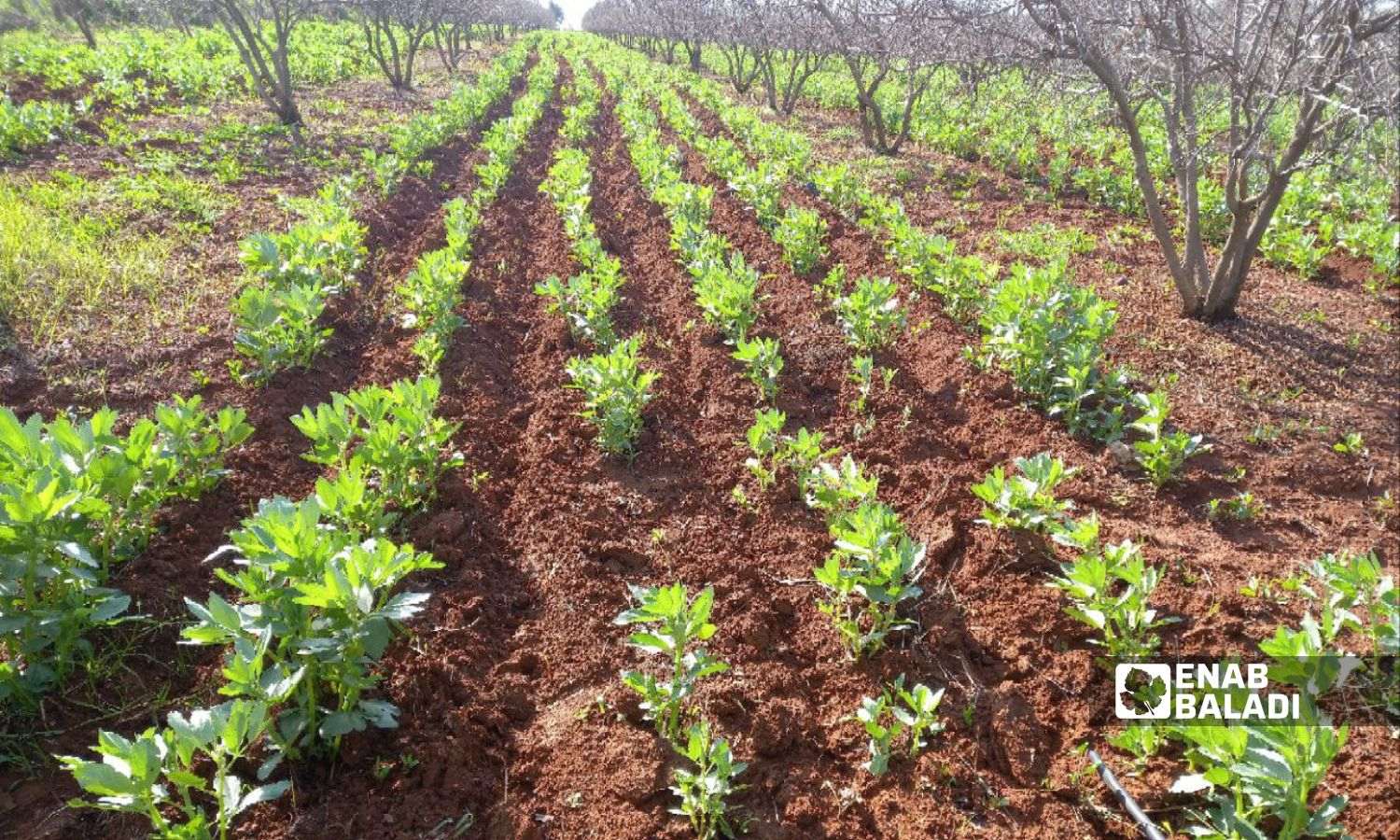



The province of Daraa, southern Syria, witnessed intermittent rainfall since the beginning of the current year, exceeding 75% of the annual average.
The continuous rainfall contributed to irrigating some crops that flourished, such as wheat and barley, but negatively affected other crops, such as peas, broad beans, and lettuce, causing excess moisture and leading to fungal diseases.
Yasser al-Khalaf’s wheat crop in the western countryside of Daraa thrived on rainwater, and he did not need to irrigate since planting it nearly two months ago.
Al-Khalaf, a farmer with approximately 25 dunums of wheat, said the rainfall revived the crop, and it currently does not require irrigation, which saves him the cost of fuel and labor wages.
He added that the delay of rainfall in the winter season of 2023 forced him to irrigate his crop since sowing, pointing out that the wheat production was not good then due to his inability to irrigate properly.
Al-Khalaf expects a good yield this season if the rainfall continues in March and April.
Agronomist Khaled Suleiman told Enab Baladi that wheat is a gramineous plant, and in Syria, it is planted from early November until the end of February, both as irrigated and rain-fed crops. It needs water amounts ranging from 300 to 600 millimeters, distributed over sporadic periods, as well as 600 hours of cold weather.
Suleiman added that other factors contribute to the success of the wheat crop, including soil quality, its richness in elements, and wheat cleaning from harmful weeds.
He also mentioned that it is important to provide wheat and barley crops with nitrogenous fertilizer during the rainy periods and also to add superphosphate at the beginning of the crop plantation.
The irrigated wheat area in Daraa reached 10,030 hectares, and the rain-fed area was 86,558 hectares, while barley crop areas amounted to 39,277 hectares. These areas are implemented according to the Directorate of Agriculture’s plan, said Wael al-Ahmad, head of the Plant Production Department in the Directorate of Agriculture of Daraa.
With the continuous rainfall over consecutive days, some winter crops were afflicted with fungal diseases, with the pea crop suffering the most damage, according to farmers in Daraa’s countryside interviewed by Enab Baladi.
Hamza Kiwan (28 years old), who has five dunums planted with peas, told Enab Baladi that the continuous rains caused the crop to yellow, noting that it needs mist irrigation at intermittent periods, like the recent continuous rainfall.
Meanwhile, Nabil Mohammad’s lettuce crop was infected with fungal diseases, and he said that the excessive moisture due to the constant rainfall caused paralysis in the plant and rust affecting the leaves.
He added that he could not spray the crop due to the difficulty in performing spraying operations due to continuous rain, and because the ground became muddy, requiring spraying operations to be conducted in dry weather without rain.
For his part, agricultural engineer Khaled Suleiman said that excess water leaves behind moisture that affects the root and causes fungal diseases. It might be possible to spray the crops with fungicides and foliar fertilizers and be given nitrogen fertilizers if the rain stops for a few days.
Suleiman added that these crops favor rainwater but at intermittent periods.
The peas were not the only crop affected by the rainfall; broad beans, lettuce, and parsley crops were also impacted.
The continuous rainfall also affected the ability to harvest the crops, as it is difficult for workers to do so during rain and when the ground is wet, and transporting the crop is also challenging due to the difficulty of transportation vehicles reaching the land, since most agricultural roads are muddy and unpaved.
Bassam al-Hashish, the Director of Agriculture in Daraa, stated that the area of irrigated pea crops reached 300 hectares, and the rain-fed pea area reached 1,645 hectares out of a planned 1,643 hectares. The irrigated bean crop area was 235 hectares, and the rain-fed broad bean area was 2,754 hectares out of a planned 2,733 hectares.
if you think the article contain wrong information or you have additional details Send Correction